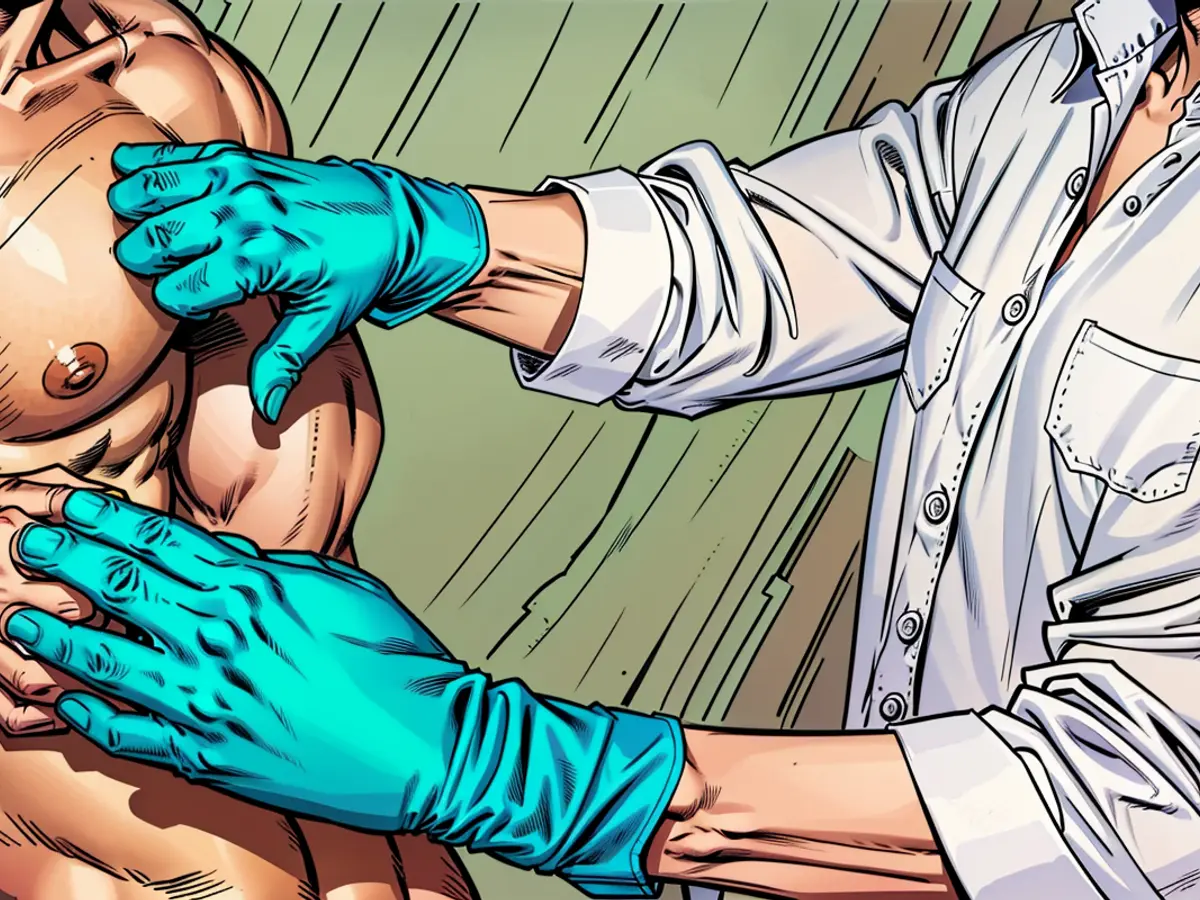Unveiling the Truth about Male Breast Cancer
Initially, we believed it was a side effect of his medication for an enlarged prostate. However, during the examination, one side seemed off to me. I decided to get a mammogram to investigate further. The results revealed an unusual spot, prompting him to meet with a specialist.
The specialist's verdict? Breast cancer in men.
Breast cancer in males is often misdiagnosed or overlooked due to its rarity. Early detection can be vital for survival.
Why men tend to ignore breast cancer
When people think of breast cancer, they imagine pink and women with breast cancer. But men also develop this condition. Indeed, men account for approximately 1% of all breast cancer cases, meaning that about 1 in 726 men will be diagnosed during their lifetime. Although the occurrence is uncommon in men, it's still a significant number of men battling breast cancer.
One of the main issues with male breast cancer is that it frequently goes unnoticed. Many men are unaware that they can develop breast cancer, and unfortunately, there are no routine screening guidelines for males like there are for females.
In fact, more than 40% of male breast cancer cases are detected at advanced stages (Stage 3 or 4). Consequently, men face more aggressive treatments due to delayed diagnoses.
The symptoms can be subtle – lumps, nipple discharge, skin changes, or swelling around the breast area. Don't disregard any changes to those "man boobs." It's always better to get checked.
Genetics and male breast cancer
Mutations in the BRCA1 and BRCA2 genes, which are typically associated with female breast and ovarian cancer, can raise a man's risk of breast cancer. Roughly 0.2% to 1.2% of men with inheritable mutations in BRCA1, while 1.8% to 7.1% of men with genetic mutations in BRCA2, will develop breast cancer by age 70.
On the other hand, around 0.1% of men in the general population will develop breast cancer by the same age. Men carrying BRCA2 mutations have a 7% to 8% lifetime risk of breast cancer, significantly higher than the average male population. Therefore, men with a family history of breast cancer, particularly those with BRCA mutations, should consider genetic testing and be vigilant about any changes in their breast tissue.
BRCA and prostate cancer
The same BRCA mutations also increase a man's risk of prostate cancer.
A patient recently visited my office with concerns that might come as a surprise for his age – prostate cancer. His mother and sister had both been diagnosed with breast cancer, and despite being in his mid-40s, he requested BRCA gene testing and a prostate-specific antigen, or PSA, blood test.
While we awaited his genetic test results, his PSA level was unusually high. At this point, the gene test became less significant. He underwent a biopsy, and the results confirmed early-stage prostate cancer. Therefore, if someone from your family has breast cancer, it's not just the women who should pay attention. The men in your family should be included in the discussion as well.
Male and female breast cancer comparisons
Both male and female breast cancers share some similarities, but there are also notable differences. Given that men have less breast tissue, the cancer is often found closer to the chest wall, affecting its spread patterns. The five-year survival rate for men with breast cancer is about 77.6%, compared to the 86.4% rate for women, largely due to later diagnoses.
Though treatments such as surgery, radiation, and chemotherapy are largely similar for men and women, the driving force is awareness. Efforts to bring awareness about breast cancer in women have been successful, but men often get left out of the conversation. That needs to change.
Examining your man boobs
Although there are no official guidelines for male self-exams, men can take proactive measures to monitor their breast health utilizing suggested self-exam techniques. Performing these exams regularly – perhaps at the same time as your monthly testicular exam – is recommended.
Begin by standing naked in front of a mirror to inspect for any abnormalities like swelling, lumps, dimpling, or nipple changes – with arms at your sides and raised overhead. For manual examination, lie down with a pillow beneath your shoulder and the arm on the side you’re examining tucked behind your head.
Use your opposite hand to gently press your fingers in small circles across your entire breast area and armpit, applying varying pressures, and gently squeeze the nipple to check for discharge. If any changes or irregularities are identified, consult your healthcare provider.
These self-exam steps are meant to help men identify potential issues early on, as early detection can be essential, especially for those with a higher risk due to family history or genetic factors such as BRCA mutations.
From lump to next steps
If an abnormality is detected, the usual process involves a mammogram or ultrasound for a thorough examination of the lump. If the imaging suggests something suspicious, a biopsy will follow. During a biopsy, the breast tissue is examined under a microscope to determine whether it's benign or malignant.
Based on the biopsy results, your doctor will discuss the appropriate treatment options, which can include surgery, radiation, or other therapies, depending on the stage and type of cancer found during biopsy and imaging staging. Similar treatments are provided to women diagnosed with breast cancer.
Busting Gender and Mental Barriers for Men's Health
Unfortunately, there's a deep-rooted stigma surrounding men with breast cancer. Many men feel embarrassed or taken aback by the diagnosis, which might delay their pursuit of early treatment. However, cancer doesn't discriminate on the basis of gender, and neither should you. The best defense against this disease, regardless of your gender, is early detection. The key is embracing openness.
Steps Men Can Proactively Take
The primary action men can take is to be vigilant about their bodies. Pay heed to any lumps, pain, swelling, or changes in your breast or chest area. Don't dismiss it. Consult your doctor. Also, if there's a history of breast or prostate cancer in your family, consider undergoing genetic testing.
Though breast cancer in men is uncommon, it's not any less critical. During Breast Cancer Awareness Month, we can help destigmatize the topic, encourage men to discuss their concerns with their doctors, and thus enable early detection. This will boost survival rates for men.
After learning about his family history of breast cancer, the man chose to undergo BRCA gene testing and a PSA blood test. Despite having a family history, early-stage prostate cancer was detected due to an unusually high PSA level.
Regular self-exams can be beneficial for men to monitor their breast health, as these exams can help identify potential issues early on, which is crucial for those with a higher risk due to family history or genetic factors such as BRCA mutations.









